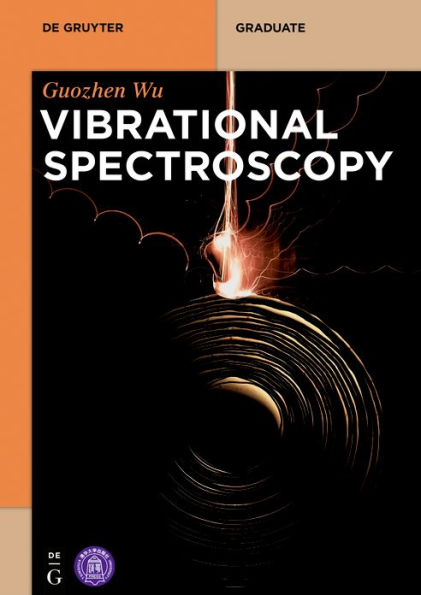Table of Contents
Preface v
1 Foundations of quantum mechanics 1
1.1 Quantum states and operators 1
1.2 Time-independent perturbation 4
1.3 Time-dependent perturbation 5
1.4 Interaction with light 6
1.5 Einstein's theory of light absorption and emission 9
1.6 Spectral profile 10
1.7 About wave number 12
Exercises 12
References 13
2 Molecular rotation 14
2.1 An overview 14
2.2 Born-Oppenheimer approximation 15
2.3 Rigid rotor 17
2.4 Spectral lines 19
2.5 Symmetry 20
2.6 Simple harmonic vibration 21
2.7 Vibration-rotation spectrum 22
2.8 Centrifugal effect 24
2.9 Anharmonicity 24
2.10 Rotational spectrum of polyatomic molecules 25
Exercises 27
References 27
3 Molecular vibrations 28
3.1 Normal vibrational modes 28
3.2 Normal coordinates 30
3.3 Selection rules 33
3.4 Generalized coordinates 34
3.5 Resonance 38
3.6 Molecules with multiple stable configurations 38
3.7 Molecular internal rotation 40
3.8 Vibrational frequencies of functional groups 43
3.9 Remarks 43
Exercises 44
References 45
4 Force constants of thiocyanate ion adsorbed on electrode surface 46
4.1 Introduction 46
4.2 Vibrational analysis of thiocyanate ion adsorbed on the Ag electrode surface 46
Reference 48
5 Representations of point groups and their applications (thiocynante) 49
5.1 Molecular symmetry and the definition of groups 49
5.2 Classification of groups 52
5.3 Some properties of groups 52
5.4 Point groups 54
5.5 Group representation 55
5.6 Character 56
5.7 Character tables 56
5.8 Reduction of a representation 58
5.9 Basis 59
5.10 Normal coordinates as the bases 60
5.11 The reduction of the representation based on the atomic displacements 62
5.12 The vibrational analysis of H2O 63
5.13 Wigner's projection operator 64
5.14 Symmetry coordinates 64
5.15 Direct product 66
5.16 Symmetry of vibrational wave function 68
5.17 Selection rules 72
5.18 Correlation 73
5.19 Comments on the point groups 74
5.20 Comments on the quantum numbers 75
Exercises 76
References 77
6 Crystal vibrations and correlation among groups 78
6.1 Crystal vibrations 78
6.2 Unit cell group, site group and translational group 80
6.3 Molecular point group, site group, unit cell group and their correlation 83
References 87
7 Electronic wave functions 88
7.1 Electronic wave functions 88
7.2 Linear combination of atomic orbitals 88
7.3 Determination of hybridization coefficients 89
7.4 Secular equation 91
7.5 Huckel approximation 92
7.6 Symmetry and group method 96
7.7 Correlation 97
7.8 Modifications of HMO 98
7.9 Electronic transition and selection rules 98
7.10 Comments 99
Exercises 99
References 100
8 Raman effect 101
8.1 Scattering 101
8.2 Raman effect 105
8.3 Quantal treatment 106
8.4 Selection rules 108
8.5 Polarizability 111
8.6 Wolkenstein's bond polarizability theory 112
8.7 Resonance Raman effect 113
8.8 Hyper-Raman effect 114
Exercises 114
References 115
9 Bond polarizability 116
9.1 Raman intensity 116
9.2 Algorithm for bond polarizability 117
9.3 Surface-enhanced Raman intensity 120
9.4 Bond polarizabilities from SER intensities 122
References 127
10 Electronic structure of Raman Virtual state 128
10.1 Raman intensity in the temporal domain 128
10.2 Raman Virtual State 128
10.3 Raman Virtual electronic structure of 2-aminopyridine 129
10.4 Uncertainty relation in Raman virtual state 133
10.5 Charge distribution in Raman virtual state 133
10.6 Remarks 135
Reference 135
11 Circular dichroism 136
11.1 Introduction 136
11.2 Coupling of electric dipole with magnetic dipole and electric quadrupole 138
11.3 Models for vibrational dichroism 139
11.4 Vibrationally induced charge flow model 139
11.5 Conclusion 141
References 141
12 Differential bond polarizability and Raman optical activity 142
12.1 Bond polarizability in Raman optical activity 142
12.2 Bond polarizability and differential bond polarizability in (+)-(R)-methyloxirane 144
12.3 Intramolecular enantiomerism 147
12.4 Equivalence between Raman, ROA intensities and bond polarizability, differential bond polarizability 149
12.5 A classical theory for ROA and charge distribution in Raman virtual State 150
References 155
13 Molecular highly excited vibration 156
13.1 Introduction 156
13.2 Morse oscillator 156
13.3 Pendulum dynamics 157
13.4 Algebraic Hamiltonian 157
13.5 Equivalence between resonance and pendulum dynamics 159
13.6 A resonance is associated with a constant of motion 160
13.7 Chaos 160
13.8 Heisenberg correspondence 161
13.9 Resonance overlap leads to chaos 163
13.10 Dynamical potential 164
13.11 Conclusion 168
References 169
Answers to exercises 171
Appendix Character tables 179
Index 191



